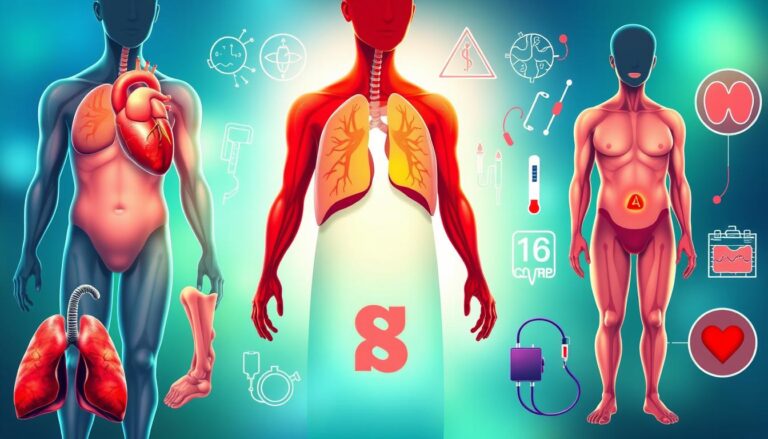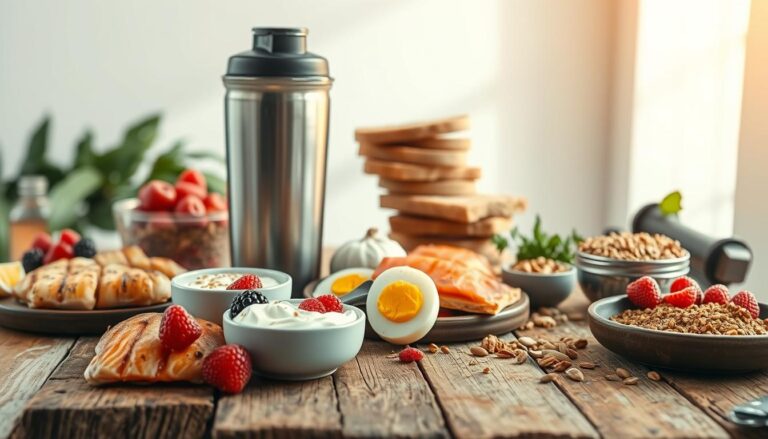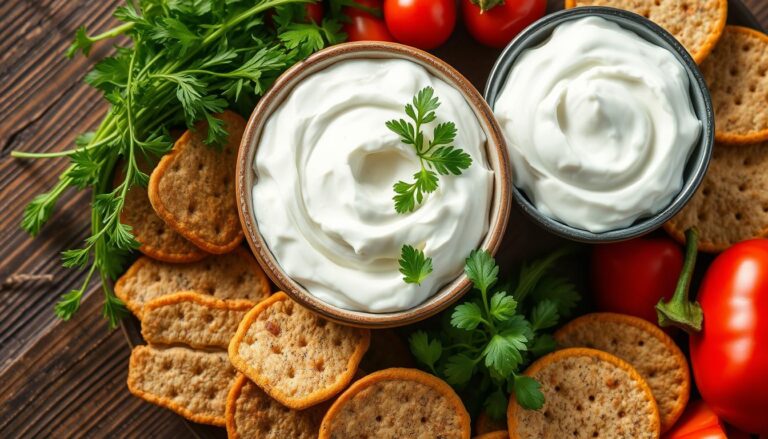Have you ever wondered why some people achieve lasting results while others struggle to maintain their progress?
The secret lies in the connection between balanced nutrition and sustainable weight management.
By focusing on nutrient-dense foods and proper meal planning,= you can transform your approach to wellness.
Following guidelines like the USDA Dietary Recommendations can help reduce risks of chronic conditions such as heart disease and type 2 diabetes. Combining calorie control with smart food choices ensures your body gets the fuel it needs without excess. Tools like MyPlate make it easier to create personalized plans that fit your lifestyle.
This article explores evidence based strategies to build sustainable eating patterns. Discover how small changes can lead to significant benefits for your health and overall well-being.
Key Takeaways
- Balanced nutrition is key to long-term weight management.
- Nutrient dense foods support overall health and energy levels.
- USDA guidelines help reduce risks of chronic diseases.
- Calorie control paired with smart choices ensures success.
- Tools like MyPlate simplify personalized meal planning.
Introduction to Healthy Eating and Weight Loss
Understanding the role of nutrition in managing body weight is essential for long-term success. What you eat directly impacts your metabolic function and energy balance. Choosing nutrient-dense foods over empty calories ensures your body gets the fuel it needs without excess.
A calorie deficit of around 600kcal per day can help you lose weight sustainably, according to NHS data. This approach focuses on gradual progress rather than quick fixes. It’s a practical way to achieve results without feeling deprived.

Many people believe restrictive diets are the only way to shed pounds. However balanced nutrition is far more effective. It supports your overall health while helping you maintain your progress over time.
Nutrient density is a key concept. Foods rich in vitamins minerals, and fiber provide more benefits than those high in fats and sugars. Pairing these choices with regular activity creates a powerful combination for wellness.
By focusing on smart dietary habits, you can improve your energy levels and reduce the risk of chronic diseases. Small changes today can lead to significant benefits tomorrow.
Understanding the Basics of a Healthy Eating Plan
Building a solid foundation for better nutrition starts with understanding the basics. A balanced approach focuses on the right food groups to fuel your body effectively. By prioritizing nutrient-rich options, you can create a sustainable plan that supports your goals.
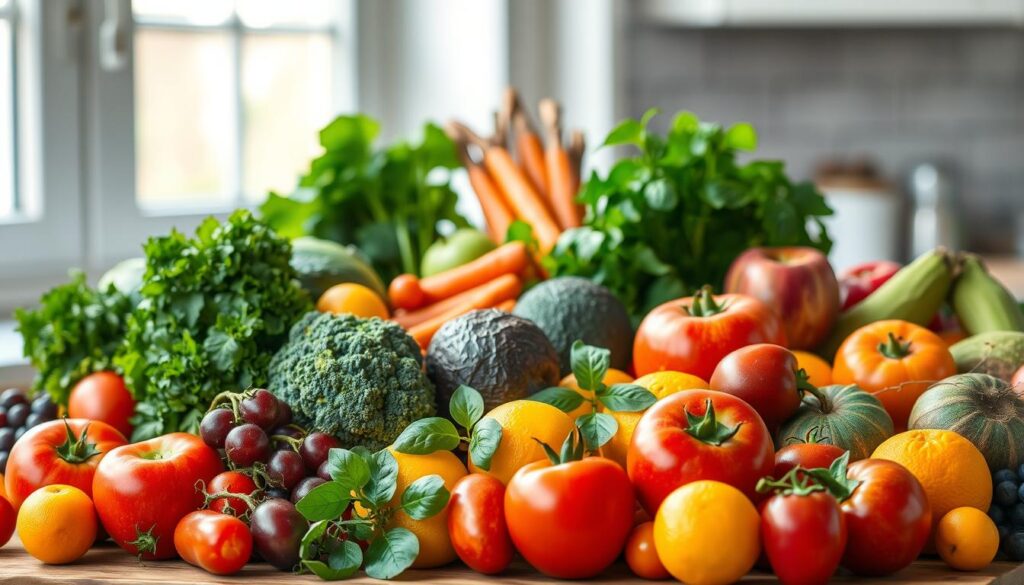
Read more: Mental Health amp Nutrition A Powerful Connection
Emphasize Fruits Vegetables and Whole Grains
Fruits and vegetables are essential for providing vitamins, minerals, and fiber. Aim for at least two portions of vegetables per meal. Fresh frozen without syrups, and canned options are all great choices.
Whole grains like quinoa and whole wheat pasta are excellent swaps for refined grains. They offer more nutrients and keep you fuller longer. Including these in your meals ensures you stay within your calorie needs.
Include a Variety of Protein Sources
Protein is crucial for muscle repair and overall health. Incorporate diverse sources like salmon, lentils, and Greek yogurt. Salmon provides omega-3s lentils are rich in fiber, and yogurt offers calcium.
Nuts and beans are also excellent plant-based options. They add variety and keep your meals interesting. Experiment with different combinations to find what works best for you.
Limit Added Sugars Sodium and Unhealthy Fats
Processed foods often contain hidden sodium and sugars. Use herbs like rosemary as alternatives to salt. This simple swap can reduce your intake without sacrificing flavor.
Not all fats are created equal. Saturated fats, found in butter, can raise cholesterol levels. Unsaturated fats, like those in olive oil, are a healthier choice. Use the table below to compare these fats.
| Type of Fat | Source | Health Impact |
|---|---|---|
| Saturated | Butter | May raise cholesterol |
| Unsaturated | Olive Oil | Supports heart health |
By focusing on these principles, you can create a plan that works for your lifestyle. Small changes today can lead to significant benefits tomorrow.
How to Create a Balanced Meal for Weight Loss
Crafting a balanced meal doesn’t have to be complicated or restrictive. By focusing on portion sizes and nutrient density you can create satisfying and nourishing meals that support your goals. Start with simple strategies to make every bite count.
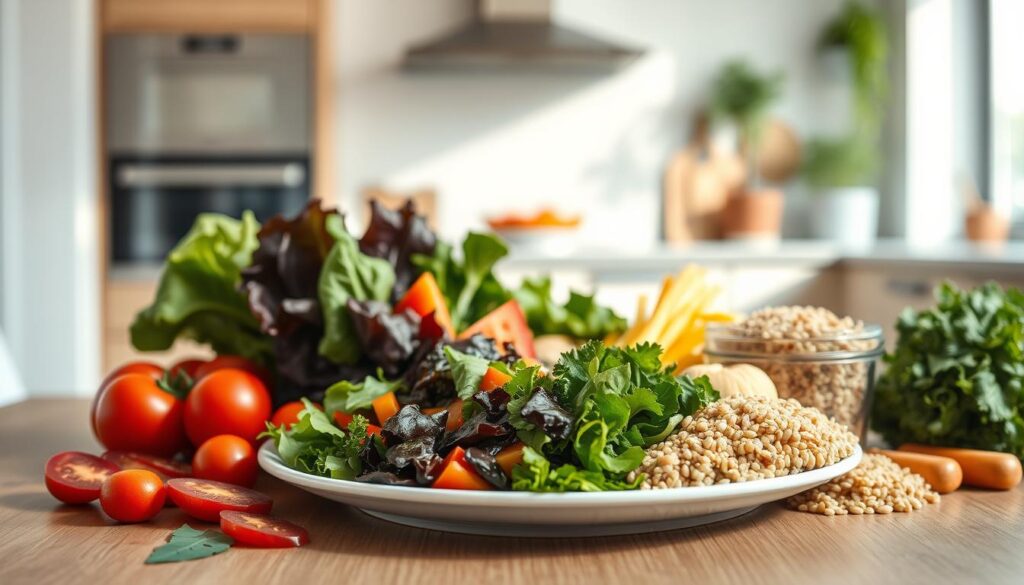
Read more:Balanced Living for Better Health
Portion Control and Calorie Management
Managing portion sizes is a practical way to stay within your daily calorie needs. Use visual guides like palm sized proteins or fist-sized carbs to estimate portions. For example, grilled chicken 165kcal per 100g is a healthier choice than fried chicken 290kcal per 100g.
Smaller plates can also help control portions without feeling deprived. Weighing ingredients ensures accuracy, especially when following recipes. Tools like MyFitnessPal integrate with USDA guidelines to simplify tracking.
Incorporating Nutrient Dense Foods
Nutrient-dense foods provide more benefits per calorie. For instance, kale offers more vitamins and minerals than iceberg lettuce. Aim for a meal blueprint: 50% non starchy veggies, 25% lean protein, and 25% whole grains.
This approach ensures you get essential nutrients while keeping portions in check. Experiment with diverse ingredients to keep your meals exciting and satisfying. Small changes today can lead to significant benefits over time.
Healthy Eating and Weight Loss Practical Tips
Making smart food choices doesn’t have to feel overwhelming. By focusing on simple strategies, you can improve your nutrition without sacrificing flavor or convenience. Here are some practical tips to help you get started.
Choosing Fresh Frozen or Canned Fruits and Vegetables
Fruits and vegetables are a vital part of any balanced diet. Fresh options are ideal, but frozen and canned varieties can be just as nutritious.
Frozen produce is often picked at peak ripeness and retains its vitamins. Canned options are convenient but choose those without added sugars or sodium. Rinsing canned beans, for example, can reduce sodium by up to 40%.
Opting for Low Fat Dairy and Calcium Rich Foods
Dairy products like milk and cheese are excellent sources of calcium. Opt for low-fat versions to reduce calorie intake. Fortified soy or almond milk are great alternatives for those who are lactose intolerant.
Sardines and fortified plant-based drinks also provide significant calcium. For example, sardines offer 325mg per serving, while fortified almond milk provides 300mg.
Preparing Meals with Healthier Cooking Methods
How you cook your food matters just as much as what you cook. Air-frying uses less oil than deep frying, saving calories without compromising taste.
Herb-infused cooking like garlic roasted Brussels sprouts adds flavor without extra butter. Nutritional yeast can replace cheese for a lower-fat option. These small changes can make a big difference over time.
| Cooking Method | Calories Saved per serving |
|---|---|
| Air-Frying | 120 |
| Deep-Frying | 300 |
By incorporating these tips into your routine, you can create meals that are both nutritious and satisfying. Start small and build habits that last a week, a month, and beyond.
Strategies for Reducing Calorie Intake
Reducing calorie intake doesn’t have to mean giving up your favorite foods. By making small mindful changes, you can enjoy your meals while still supporting your goals. Focus on portion control smart swaps, and rethinking what you drink to create a sustainable plan.
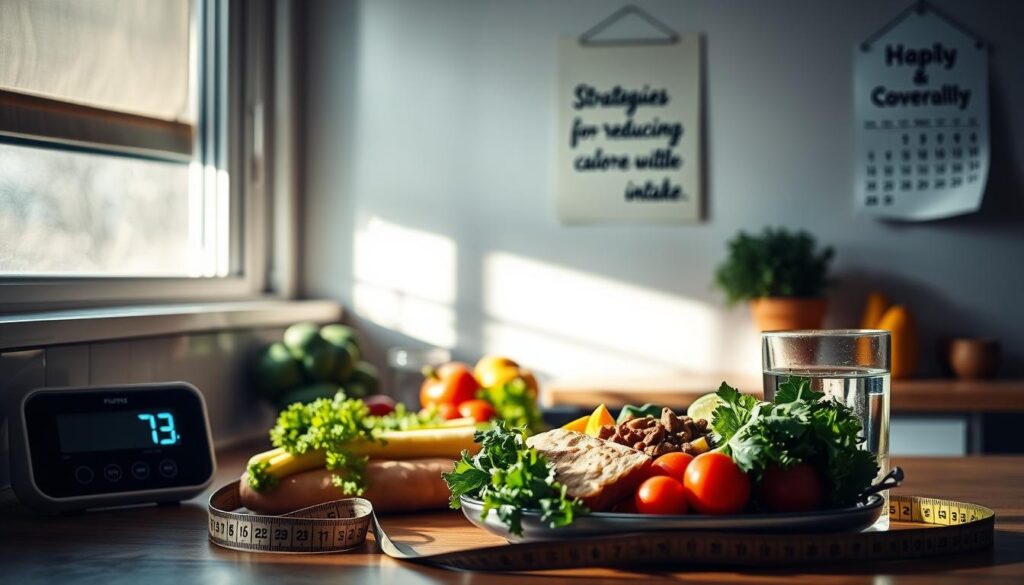
Eating Smaller Portions
Portion sizes have grown significantly over the years. Modern plates are 36% larger than those from the 1960s, leading to overeating.
Use the Half Plate Rule fill half your plate with non-starchy vegetables, a quarter with lean protein, and the rest with whole grains. This simple strategy helps control portions without feeling deprived.
Smaller plates and bowls can also trick your brain into feeling satisfied with less food. Weighing ingredients ensures accuracy, especially when tracking calories. These small changes can add up over every day.
Choosing Lower Calorie Versions of Favorite Foods
You don’t have to give up comfort foods to reduce calories. Swap traditional pizza crust for cauliflower crust to save up to 150 calories per slice. Use Greek yogurt instead of sour cream in dips and sauces for a protein boost with fewer fats.
Be mindful of stealth calorie sources like salad dressings and flavored yogurts. Opt for homemade versions or low-calorie alternatives. These swaps allow you to enjoy your favorites while staying on track.
Rethinking Your Drink Choices
Liquid calories can add up quickly. Switching from a latte 190kcal to black coffee 5kcal saves 185 calories per serving. Aim for 6-8 cups of fluids daily, focusing on water, herbal teas, or unsweetened beverages.
Sugary drinks like soda and juice are high in empty calories. Replace them with infused water or sparkling water for a refreshing, low-calorie option. These changes can make a big difference over time.
| Drink | Calories per serving |
|---|---|
| Latte | 190 |
| Black Coffee | 5 |
| Soda | 140 |
| Infused Water | 0 |
By incorporating these strategies, you can reduce your calorie intake without sacrificing flavor or satisfaction. Start small and build habits that last a week a month, and beyond.
The Role of Physical Activity in Weight Loss
Physical activity plays a vital role in managing your overall well-being. It’s not just about burning calories it’s about supporting your body and reducing risks of conditions like obesity and heart disease. Combining movement with a balanced approach can lead to lasting results.
One effective strategy is NEAT Non-Exercise Activity Thermogenesis. This includes everyday movements like using a desk treadmill or holding walking meetings. These small changes can significantly boost your daily calorie burn without requiring a gym session.
Different activities have varying impacts. For example, swimming has a MET Metabolic Equivalent of Task score of 8.0, while walking scores 3.5. This means swimming burns more calories in the same amount of time. Choosing activities that fit your lifestyle ensures consistency.
Post exercise oxygen consumption is another benefit. After intense workouts, your body continues to burn calories as it recovers. This makes high intensity workouts a smart choice for long-term results.
It’s important to address common myths. Spot reduction, like targeting belly fat with crunches, is a misconception. Fat loss occurs across the entire body not just one area. Focus on full-body exercises for balanced results.
Pairing activities with mental health benefits can also help. For example, yoga reduces stress, which can curb stress-eating. Combining physical and mental wellness creates a holistic approach to health.
- NEAT strategies: desk treadmills, walking meetings.
- MET comparisons: swimming 8.0 vs. walking 3.5.
- Post-exercise oxygen consumption boosts calorie burn.
- Spot reduction is a myth focus on full-body exercises.
- Pair yoga with other activities for stress reduction.
Planning and Preparing Healthy Meals
Effective meal planning can transform your daily routine and support your goals. By organizing your meals in advance, you can save time, reduce stress, and stay consistent. Tools like MyPlate and food diaries make it easier to track your progress and ensure balanced nutrition.
Using Tools Like MyPlate and Food Diaries
MyPlate is a practical resource for building balanced meals. It divides your plate into groups: fruits, vegetables, grains, protein, and dairy. This visual guide helps you create nutrient-rich meals without overthinking.
Food diaries, like the My Food Diary app, track your daily intake. They provide insights into your habits and help you stick to a 12-week plan. Apps like LoseIt! and MyFitnessPal also offer macro tracking, making it easier to monitor your progress.
Meal Prepping for Success
Batch cooking is a game-changer for busy days. Spend three hours on a Sunday to prepare weekly meals. Freezer friendly options like lentil chili and veggie packed lasagna save time and ensure you always have a healthy option on hand.
Optimize your grocery list by organizing it into MyPlate categories. This ensures you buy what you need and avoid impulse purchases. Time saving hacks, like pre-cut frozen stir-fry mixes, make cooking faster and more convenient.
- Batch cooking templates for weekly meals.
- Compare app features: LoseIt! vs. MyFitnessPal.
- Freezer friendly recipes: lentil chili veggie lasagna.
- Grocery list optimization using MyPlate categories.
- Time-saving hacks: pre cut frozen stir-fry mixes.
Overcoming Common Challenges in Healthy Eating
Navigating the ups and downs of a balanced lifestyle can feel daunting, but with the right strategies, it’s entirely manageable. Whether you’re trying to lose weight or maintain a nutritious diet, understanding how to handle cravings and stay motivated is key to long-term success.
Managing Cravings for Comfort Foods
Cravings often stem from serotonin dips, which can trigger a desire for carbohydrates. Instead of giving in to unhealthy options, try these 15-minute swaps: zucchini noodles instead of pasta or air-popped popcorn instead of chips. These small changes can satisfy your cravings without derailing your diet.
Habit-stacking is another effective technique. Pair a post workout smoothie routine with your exercise schedule. This creates a positive association and helps you stay on track. Over time, these habits become second nature.
- Detail craving cycles: serotonin links to carbohydrate cravings.
- Provide 15-minute healthy swaps: zucchini noodles vs. pasta.
- Discuss habit-stacking techniques: post-workout smoothie routines.
Staying Motivated and Consistent
Consistency is the backbone of any successful weight management plan. Accountability tools like weekly meal check-ins and progress photos can keep you focused. These visual reminders highlight your progress and keep you motivated.
Emotional eating triggers can also derail your efforts. Cognitive Behavioral Therapy CBT strategies, such as identifying emotional triggers and replacing them with healthier habits, can make a significant difference. For example, if stress leads to snacking, try deep breathing exercises instead.
Success is the sum of small efforts, repeated day in and day out.
- List accountability tools: weekly meal check ins progress photos.
- Address emotional eating triggers with CBT strategies.
Conclusion Embracing a Healthier Lifestyle
Adopting a healthier lifestyle is about making sustainable choices that fit your daily routine. The 80/20 rule allows flexibility, letting you enjoy treats while staying on track. This balance is a key part of long-term success.
Resources like the AHA cookbook and Beat eating disorder support can guide you. Gradual changes, such as a 5% body weight reduction offer significant health benefits. Small steps lead to lasting improvements.
Studies show that these changes enhance quality of life. Start today by downloading the NHS 12-week plan. It’s a practical tool to help you build habits that last a week, a month, and beyond.
Embrace this journey with confidence. Sustainable habits are the foundation of a healthier, happier you.
FAQ
What are the key components of a balanced meal for weight loss?
A balanced meal includes a mix of fruits, vegetables, whole grains, lean proteins, and healthy fats. Portion control and choosing nutrient-dense foods are essential for managing calorie intake effectively.
How can I reduce added sugars and unhealthy fats in my diet?
Focus on whole, unprocessed foods and read nutrition labels to avoid hidden sugars and fats. Replace sugary drinks with water and opt for cooking methods like grilling or steaming instead of frying.
What are some practical tips for incorporating more fruits and vegetables into my meals?
Choose fresh, frozen, or canned options without added sugars or sodium. Add veggies to soups, salads, or smoothies, and keep fruit on hand for easy snacks.
How does physical activity support weight loss?
Regular exercise helps burn calories, boosts metabolism, and improves overall health. Combining cardio, strength training, and flexibility exercises can enhance results.
What tools can help me plan and prepare healthier meals?
Use resources like MyPlate to guide portion sizes and food groups. Keeping a food diary can also help track intake and identify areas for improvement.
How can I manage cravings for comfort foods?
Opt for healthier versions of your favorite dishes, practice mindful eating, and keep healthier snacks available. Staying hydrated and managing stress can also reduce cravings.
What are the benefits of meal prepping for weight loss?
Meal prepping saves time, ensures you have healthy options readily available, and helps avoid impulsive, less nutritious choices. It also supports portion control and calorie management.
How can I stay motivated to maintain a healthier lifestyle?
Set realistic goals, track progress, and celebrate small victories. Surround yourself with supportive people and focus on the long-term benefits of improved health.
